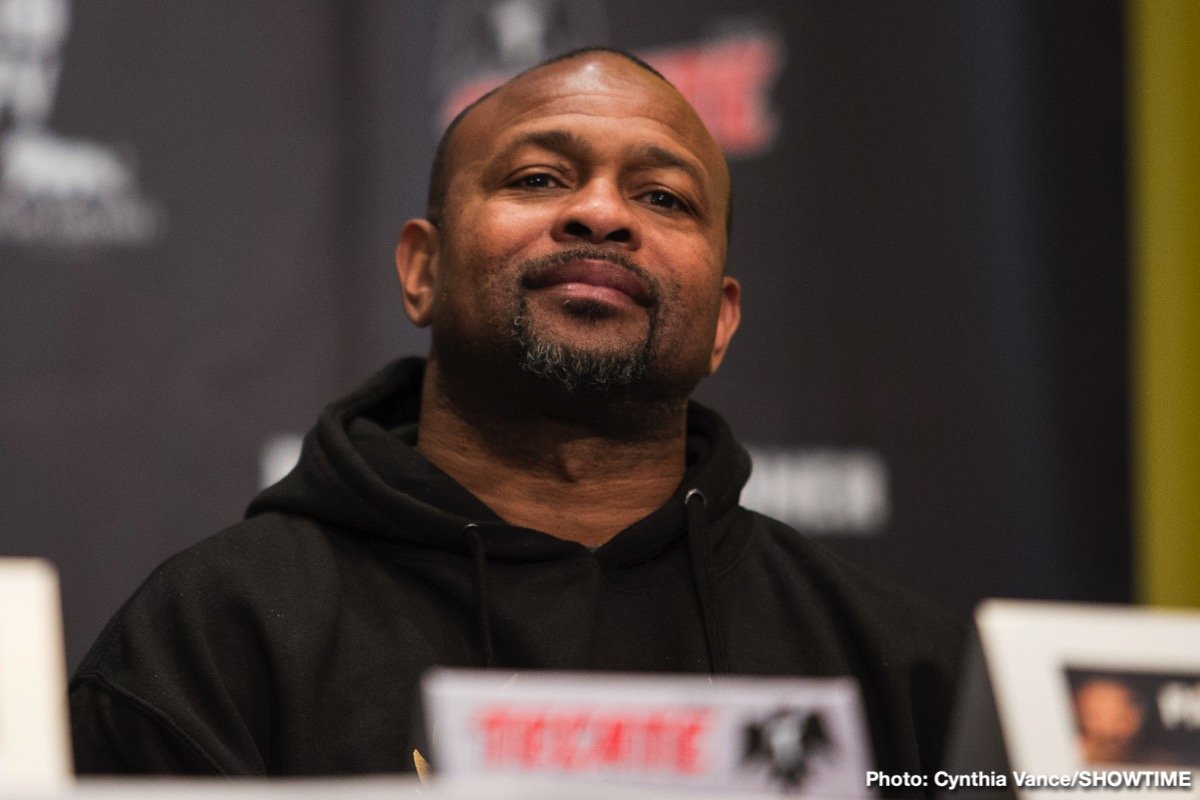18 years ago today, boxing history was made in Las Vegas, while an all-time great put the icing of icings on his four-tier cake. Roy Jones Jr, a masterful force at middleweight, at super-middleweight, and at light-heavyweight, went for the ultimate: a slice of the world heavyweight title. Well, maybe Jones didn’t quite go for the ultimate – a fight with Lennox Lewis or Mike Tyson would have been the ultimate for a number of reasons – but Jones was certainly taking a risk by fighting John Ruiz.
The fight saw Jones earn $10 million, while a win would see him become the first former world middleweight champion to have won even a portion of the heavyweight crown since Bob Fitzsimmons did it way back in 1897. A win would also make Jones just the second light-heavyweight champion to move up and win a major heavyweight title; Michael Spinks and his “Jinx” being able to do the job against Larry Holmes in 1985.

Jones was superior to Ruiz in every department aside from physical strength, and Jones’ speed, speed, speed saw to it that Ruiz, who was trying to hold onto his WBA heavyweight belt, was unable to apply any physical pressure during the one-sided bout. In short, it was a boxing clinic Jones was putting on, one that was a joy to watch for everyone who was not a Ruiz fan or family or team member. For some fans and experts, Jones deserved pretty much every round (Harold Lederman had it scored a handsome 119-109 for Jones). Officially, after 12 frustrating rounds for Ruiz, Jones won by scores of 118-110, 117-111 and 116-112.
Jones was now the king of kings. He seemed to be just about unbeatable, untouchable even (the sole loss on his now 48-1 ledger being a controversial 1997 DQ loss to the underrated Montell Griffin, Jones swiftly and brutally avenging the loss later that same year). Nobody, as in nobody, could have predicted what would come for Jones in his next two fights.
With big-money heavyweight showdowns with the likes of Tyson, Lewis and Evander Holyfield very much a possibility, Jones instead dropped back down from the 199 pounds he had bulked up to for the Ruiz fight. It proved to be a big mistake, and a motivated Antonio Tarver appeared to have taken advantage of Jones’ fatigue and lack of zing, only to lose the light-heavyweight title fight of November 2003, this via hugely debatable decision.
Then came a shocker to equal the Buster Douglas KO of Tyson. Jones was stunningly taken out in the second round by Tarver in their 2004 rematch. This was too much of a shock for many fans to be able to fully comprehend. All these years later, we can ask two questions: What if Jones, aged 34, had retired, on top of the world, after his historic win over Ruiz? And what if Jones had stayed at heavyweight after beating Ruiz?
If he had called it quits on a career filled with glory, thus avoiding the increasing number of falls he would take in the coming years after the loss to Tarver, fans would today be calling Jones, at 48-1 and a four-weight king, THE greatest fighter ever. Of this I am certain. But Jones fought on and his legacy suffered quite quickly as a result.
As for if he’d stayed at heavyweight, Jones would surely have been biting off more than he could possibly chew if he fought Lewis. Lennox was just too big, and too proud to lose to such a smaller man. As for Jones against “small” heavyweights Tyson and Holyfield, well, a fan can slip right into Dream Fight mode very easily here. Jones might have been able to avoid Tyson’s bombs long enough for the 2004 version of “Iron Mike” to get tired and get frustrated. But it’s anyone’s guess as to what would have happened then. Might Tyson have quit against Jones? Might Tyson have done something crazy that ensured he got thrown out against Jones?
Holyfield was also past his best by some margin in 2004, and Jones’ speed might have been too much for him. We will of course never know.
But on the night of March 1 2003, Roy Jones Jr seemed to have put the finishing touches on one of the greatest, most awe-inspiring boxing careers in history. How much gold can a fighter want?
